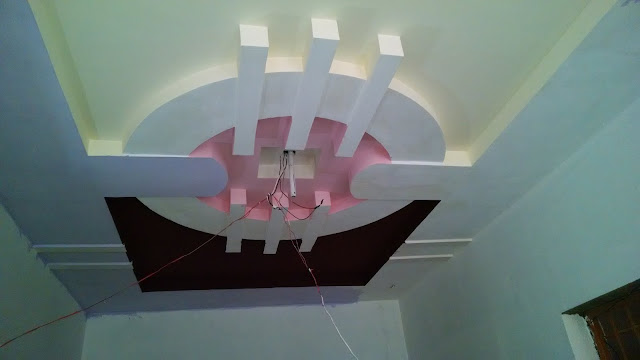Types of False Ceilings and its Applications
False ceiling on suspended supports is given below the roof slab. Usually, fake celling is given for temperature control (thermal insulation for AC), light installation, or concealing electrical and other network cables, and hideous or too high ceiling.
False ceiling is an instance of contemporary, residential and commercial building and architecture.
False ceiling components or parts:
False ceilings can be distinguished into many kinds depending on their uses, materials used, appearance and visibility.
The major classification based on materials used are listed briefly below,
- Gypsum Ceiling
- Plaster of Paris Ceiling
- Fiber Ceiling
- Wooden Ceiling
- Glass Ceiling
- Metal Ceiling
- Synthetic Leather or Cloth Ceiling
Gypsum False Ceiling:
Gypsum false ceiling is a calcium hydrated sulphate. This sort of false ceiling is lightweight, isolated from noise, resistant to fire, smooth and thermally insulated.
Gypsum fake ceiling comes in the form of iron frame hanging square boards. The finishing job such as paints, laminates, wallpapers and texture finishes on these boards provides a nice look.
Plaster of Paris Ceiling:
Paris Plaster (POP) is the most widely used material in false ceiling building. When gypsum is heated to some degree, POP is acquired. It provides both esthetic and functional assistance.
False ceiling plaster from Paris is appealing, almost maintenance-free and has a lengthy life span. They are very good heat and cold insulators.
Not only do these kinds of false ceiling conceal the hideous parts of structure, ventilation ducts and conduits, but they also offer the roof a smooth finish.
Fiber False Ceiling:
Due to low price and eastern installation, fiber false ceiling is in high demand for the building of false ceiling. The material used in the production of fiber ceiling panels is manufactured from natural and synthetic minerals. They come in many shapes and sizes as they are man-made.
Wooden False Ceiling:
Due to its natural textures and pattern, wooden fake ceiling is used. These kinds of false ceiling are widely used nowadays as it provides the eyes a pleasant look.
Wooden false ceiling is expensive, not used in shopping malls and hospitals, but can be installed in residential buildings. In order to get the correct look, they can be provided different finishes or painted.
Wooden false ceiling has a lot of drawbacks, mostly:
- Prone to thermite attack.
- Prone to warping.
- The room should be thermally controlled.
Glass False Ceiling:
Glass is one of the kinds of false ceiling used in building. It is a non-cristalline material with a fragile and transparent property. But with some admixtures, this can be changed to render it non-brittleand non-transparent.
It can be used for false ceiling since glass is a useful heat insulator. This sort of false ceiling enhances the building's esthetic appearance.
Metal Ceiling:
Since metal is a material that is difficult and durable, it is widely used in the false ceiling. It provides a shiny surface when the metal surface is polished, which is a treat for the eyes.
The metals used here are iron and aluminum galvanized. This ceiling's price is small because it's simple to install and access. It is easy to access the concealed parts of the framework as the panels are readily removable and reassembled. Building costs get lower as installation, fixation, and maintenance are small.
Synthetic Leather or Cloth Ceiling:
Either leather or cloth are the materials used in this sort of ceiling. Since both the materials used are man-made, they can be provided any shape, shape and design that enhances the esthetic perspective of the building's interior.
It is only used in temporary tents or other temporary structures as these collect dust and have low light transferring assets.
Advantages of False Ceiling:
- It provides a smooth homogeneous surface to the roof.
- It provides fire protection as it creates compartmentation.
- False ceiling helps in acoustical treatment.
- It conceals all the non-pleasing elements and hides it from the viewer’s eyes.
- It also hides the pipelines and the electrical cables running in the room. All the ducts of air-conditioning can be hidden under it.
- False ceiling materials are easy to install and cheap as compared to traditional roof systems.
Disadvantages of False Ceiling:
- The most worrying aspect of having a false ceiling would be pests. They can get through into the space between and can start their own breeding which might lead to a lot of trouble.
- Also be careful while putting up decorations or hangings while you have a false ceiling in place. Make sure you know the strength and durability, do’s and don’ts with regard to your ceiling.
- Lastly, the false ceiling would reduce the height of the ceiling considerably and hence do not install false ceiling unless you have a decent ceiling height.









No comments:
Post a Comment
Thanks for Comments